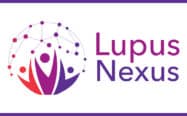First Joint Common Mechanisms Grants Announced
NEW YORK, NY, February 24, 2021 – JDRF International, the Lupus Research Alliance and the National Multiple Sclerosis Society joined forces to accelerate research and discovery in autoimmunity and are proud to announce the recipients of their first joint grants. Called Decoding Immune-Mediated Diseases – Novel Approaches for Therapeutic Insights, the new grant program will support the research of eight grant recipients from major academic centers around the world. This marks the first time these three organizations are jointly funding research projects looking at common underlying disease mechanisms.
Autoimmune and immune-mediated diseases are chronic disorders in which the immune system produces a harmful response against its own cells, tissues and/or organs that results in inflammation and organ damage. According to the NIH, some 24 million Americans suffer from the more than 80 autoimmune diseases. Some autoimmune diseases target one area of the body; for instance, type 1 diabetes (T1D) affects the pancreas while multiple sclerosis (MS) damages the nervous system. In contrast, systemic lupus erythematosus (SLE) can affect the entire body, attacking virtually any organ or tissue.
Insufficient knowledge of how these diseases progress, as well as their heterogeneity is a common challenge among T1D, lupus and MS—that this grant program aims to overcome. The Decoding Immune-Mediated Diseases grants will provide researchers either up to $450,000 over two years or $225,000 over one year depending on the scope of the project. Each study will investigate the immune system’s role in the development of lupus, T1D and/or MS. The 2021 awardees are examining possible common mechanisms that could cause or contribute to the development of at least two of the three autoimmune diseases. Ultimately, the researchers hope to find novel biological targets and strategies for therapies to treat the diseases.
Visit DecodingAutoimmunity.org to learn about each of the following grantees and their projects:
Researchers Funded:
Amit Bar-Or, M.D., University of Pennsylvania
Linking multiple disease compartments in T1D and multiple sclerosis
Dr. Bar-Or’s study will provide immune cell profiles in three distinct sites: target organ-associated immune cells, tissue-draining lymphatic immune cells, and circulating blood—the first to be able to do so—in type 1 diabetes and multiple sclerosis, with the goals of exploring hidden immune compartments, determining blood measures that better correspond with what is happening in the tissue being injured, and targeting them therapeutically.
Chris Cotsapas, Ph.D., Yale University
Identification of pathogenic pathways through genomic engineering to identify shared genetic effects on people with T1D, SLE, and MS
Dr. Cotsapas has developed a set of diagnostic tools to compare genetic information from different diseases and identify the regions in the genome (DNA) associated with the disease risks. He will use genome engineering—a way to make changes in the DNA—to determine the effect of a specific alteration of the DNA on the function of immune cells and uncover the biological basis for risk shared across autoimmune diseases, and find specific pathways that can be targeted for drug development.
Kevan Herold, M.D., Yale University
Analysis of antigen specific T cells in response to immune therapies in MS and T1D
Dr. Herold will study the immune cells that have been activated for target-organ molecules, in type 1 diabetes and multiple sclerosis, to identify features that account for their ability to cause autoimmunity, and will use anti-CD20 antibodies—an immunotherapy that targets immune cells called B cells—to find out how they change immune cells called T cells.
Thomas Pieber, M.D., University of Graz, Austria
COMET common mechanisms in autoimmunity
Dr. Pieber will apply advanced machine-learning approaches on existing data from people with type 1 diabetes, lupus, multiple sclerosis, and rheumatoid arthritis and healthy volunteers, to identify the shared or differential characteristics of their immune cells, which could uncover important pathways to be targeted for potential therapies.
William Robinson, M.D., Ph.D., Stanford University
Dissecting the genetics and host interactions of EBV-related autoimmunity
Dr. Robinson’s study will apply next-generation technologies to determine how Epstein-Barr virus (EBV) can trigger autoimmunity in multiple sclerosis and lupus. Understanding the mechanism underlying EBV’s role in autoimmunity could lead to the development of targeted therapies for these diseases.
Ansuman Satpathy, M.D., Ph.D., Stanford University
3D and single-cell epigenome technologies for autoimmune disease
Dr. Satpathy will use the latest technology that can obtain genomic information at a single cell level to identify the molecular pathways that cause autoimmune disease—including type 1 diabetes, systemic lupus erythematosus, and multiple sclerosis. He anticipates that these studies will provide novel insights into the shared and disease-specific mechanisms governing each disease that could lead to new therapeutic intervention.
Alexandra-Chloé Villani, Ph.D., Massachusetts General Hospital/Harvard Medical School
Single-cell genomics dissection of common immune networks driving autoimmunity
Using new state-of-the-art technologies called single-cell multi-omics, which combines the comprehensive nature of genomics with the microscopic resolution required to reveal distinct insights in the molecular make-up of every single cell comprised in tissues, Dr. Villani will compare the cell type and characteristic of each single cell from blood and tissue samples collected from healthy people and people with autoimmune diseases. Identifying the composition, state of the cells, and transcriptional programs making up the tissues and blood specimens obtained from different diseases will enable to pinpoint the biological processes and pathways shared between diseases that could be targeted for therapeutic potential.
Julie Zikherman, M.D., (with Samuel Pleasure, M.D., Ph.D., Michael Wilson, M.D., Judith Ashouri, M.D., Joseph Derisi, Ph.D., who will serve as co-investigators), University of California, San Francisco
NR4A family as markers and mediators of B cell tolerance across autoimmune diseases: From antigen discovery to treatment
Self-reactive B cells can produce autoantibodies that mistakenly tag the body’s own cells as foreign and trigger an attack by the immune system. Dr. Zikherman and co-investigators will take advantage of the unique expression of genes in the NR4A family to identify these cells, and will couple this approach with a novel high-throughput phage-display platform to identify autoantigens and autoantibodies in people with type 1 diabetes, multiple sclerosis, and lupus.
Goals for this Autoimmune Partnership
“Understanding the commonalities between autoimmune diseases and how they affect the body can be the key to ultimately unlocking cures applicable to multiple communities,” said Sanjoy Dutta, Ph.D., JDRF Vice President of Research. “JDRF is excited to partner with both the Lupus Research Alliance and the National MS Society to support this research and transform the lives of millions affected by these autoimmune and immune-mediated diseases.”
Teodora Staeva, Ph.D., LRA Chief Scientific Officer, notes, “Because the initiation and progression of autoimmune diseases are still poorly understood and their cure has yet to be identified, we joined with JDRF and NMSS to support projects that could provide broad insights into autoimmune diseases and identify pathways distinctly affected in each specific disease.” She adds, “Decoding the mechanisms common to these three serious disorders of the immune system will help scientists to not only develop therapeutic targets, but also to identify which patients can most benefit from them.”
“This partnership creates the opportunity to increase the pool of investigators working across autoimmune disease areas, exploring shared environmental and genetic risk factors and using comparative approaches to provide insights on the most promising pathways to target each disease. We hope this research will lead to new strategies to regulate the immune system,” says Mark Allegretta, Ph.D., Vice President of Research at the National MS Society.
Visit DecodingAutoimmunity.org for more information.
About JDRF International
JDRF’s mission is to accelerate life-changing breakthroughs to cure, prevent and treat T1D and its complications. To accomplish this, JDRF has invested more than $2.5 billion in research funding since our inception. We are an organization built on a grassroots model of people connecting in their local communities, collaborating regionally for efficiency and broader fundraising impact, and uniting on a national stage to pool resources, passion, and energy. We collaborate with academic institutions, policymakers, and corporate and industry partners to develop and deliver a pipeline of innovative therapies to people living with T1D. Our staff and volunteers throughout the United States and our five international affiliates are dedicated to advocacy, community engagement and our vision of a world without T1D. For more information, please visit jdrf.org or follow us on Twitter (@JDRF), Facebook (@myjdrf), and Instagram (@jdrfhq).
About the Lupus Research Alliance
The Lupus Research Alliance is the largest non-governmental, non-profit funder of lupus research worldwide. The organization aims to transform treatment by funding the most innovative lupus research, fostering diverse scientific talent, and driving discovery toward better diagnostics, improved treatments and ultimately a cure for lupus. Because the Lupus Research Alliance’s Board of Directors fund all administrative and fundraising costs, 100% of all donations goes to support lupus research programs. Visit LupusResearch.org to learn more about lupus and the research LRA is funding to find new treatments and a cure.
About the National MS Society
The National MS Society, founded in 1946, funds cutting-edge research, drives change through advocacy, and provides programs and services to help people affected by MS live their best lives. Connect to learn more and get involved: nationalMSsociety.org, Facebook, Twitter, Instagram, YouTube or 1-800-344-4867.
# # #
Media Contacts:
Ayana Young, JDRF
AYoung@jdrf.org
Margy Meislin, LRA
MMeislin@lupusresearch.org
Daphne Mack, National MS Society
Daphne.Mack@nmss.org






